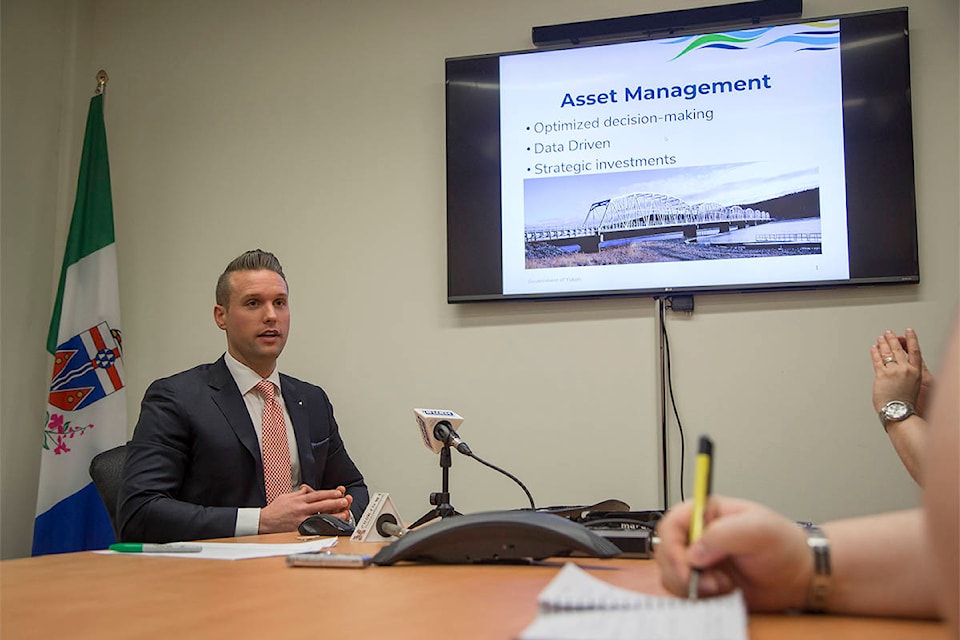The Yukon government has introduced a regimented roadway maintenance program that aims to improve safety and preserve assets.
The development marks a first, said Richard Mostyn, minister of highways and public works on April 10, the day the program was announced, adding that until now, things have been “erratic” and “inexplicable.”
“It’s something I’m shocked hasn’t existed before,” he told reporters during a technical briefing. “It seems so simple, (but) it’s an absolute radical approach to the way we’ve done business in the past.
“We’re modernizing how we maintain our roadways, moving from a haphazard, fast and loose approach to one that is data driven and strategic. The plan is informed by traffic volume, by trade corridors, community links, by tourism.”
In six years, Mostyn continued, “we’ll have the entire network done, a total of 6,200 kilometres of road. …”
The program is made up of five components, including clearing brush, painting lines on roads and installing barriers.
“This program is going to make Yukon roads safer for all who use them, safer for drivers, for cyclists, for pedestrians, equestrians, for visitors and also for wildlife,” said Mostyn, adding plans for it took about one year develop.
The backbone of the program is that highways are categorized. There are six classes. Each are graded depending on traffic volumes. For instance, class one involves roads that have the most traffic – an average of 3,000 vehicles per day that link large communities, major trade routes and tourism, according to a program report.
The program budget for this fiscal year is worth $4.9 million, said Richard Gorczyca, director of transportation planning for the department, the majority of which will go towards vegetation control (46 per cent). The second most costly piece of the pie deals with installing barriers, pegged at 27 per cent.
Brush clearing is projected to cost $3.2 million for the first six years, said Gorczyca, adding that there will be a 255 per cent increase in the amount of vegetation removed.
Costs associated with vegetation control are expected to be lower in future years, he said.
“It’s expected to reduce to about $2 million ongoing, as a result of some of the efficiencies created by reducing that backlog of heavy brush that we have to clear,” said Gorczyca, noting that this work is to start close to communities.
“Throughout a six-year cycle we’ll be working to close those gaps,” he said.
Three public tenders are to be released this week, said Michael Zuccarini, program manager.
“Each of the three would range between $500,000 to $1 million,” he said.
Work is expected to start this spring, said Gorczyca, adding that contracts are to end in the fall.
This year, a roughly 700 km stretch of the Alaska Highway between Watson Lake and Haines Junction will be painted, he said. The cycle of this work will continue. Next year the Klondike Highway will be focused on.
The road painting program is expected to target 2,042 km, an increase of roughly 400 km compared to current lengths. The price tag for this is expected to be roughly $1.1 million.
“The benefits to this approach to painting is we’re basically looking at a higher life cycle for our paint,” said Gorczyca, noting a higher paint thickness. “We’ll be conducting sweeping activities to follow our paint truck, which allow for better adherence in the paint.”
Contact Julien Gignac at julien.gignac@yukon-news.com
